A Brief, 100% Accurate, History of the 21st Century, Starring Panthers
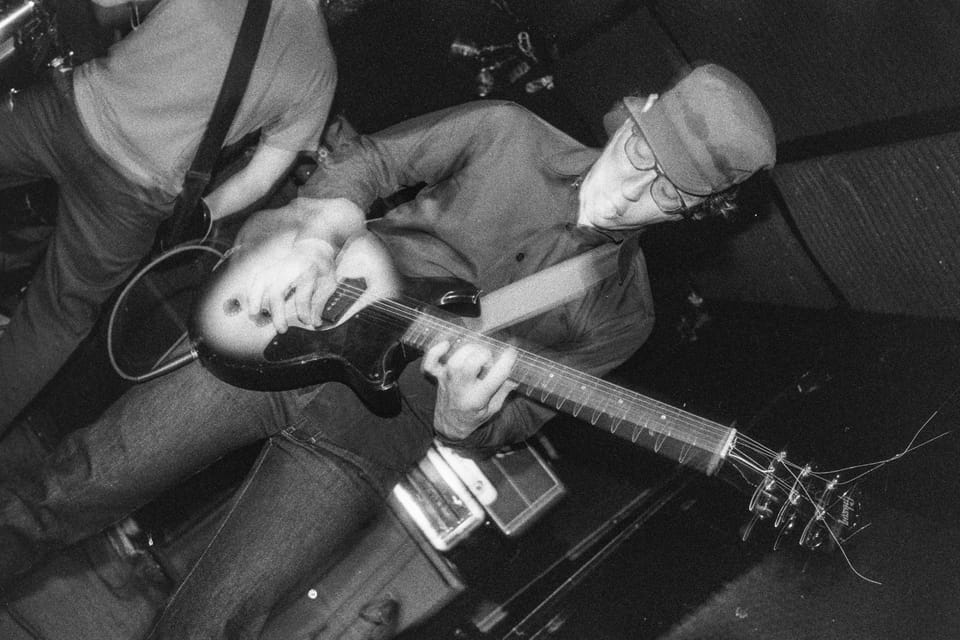
Newsletter Business/warning: This edition of Abundant Living is about Panthers, indie sleaze, NYC in the aughts, nostalgia, and how everybody gets everything wrong and has terrible taste. It is not about Justin Chearno, the guitarist who died on August 22, but it is for him. Like most, I was exceedingly fond of Justin. I considered him a friend. But I hadn’t spoken to him in years, so I purposefully kept the focus of this essay to the music. Both out of respect for the awful loss others are experiencing, and because I was—and am—a fan. For a more personal memorial, Jon Fine wrote a lovely one. There are many, many others. I instead focussed on what Chearno and I had most in common; a love for wildly (often justifiably) unpopular music and gleeful shit talking.
The purpose of this intro is to warn the reader that, In my fandom, and in honoring every single conversation I’ve ever had with Chearno over the last two decades, I have made zero effort to make even a single sentence of this essay remotely accessible to anyone without an appallingly encyclopedic knowledge of the last thirty years of post-hardcore/post-punk minutia. While hyperlinks have been provided for the curious, not a single obscure reference was omitted. No wild aesthetic supposition, backed up with only the squirrelliest of evidence, was edited out. Every opportunity for scene gossip and sideways slander was indulged, and done so with a joyful, reverential crapulence. True to the man’s strong opinions, there’s nothing here that isn’t 100% correct. But if what follows reads like being trapped in the unlit basement of Dischord House and slapped around by a bag of Punk Planet refrigerator magnets, it is offered without apology. It is what Chearno would have wanted. If the man himself takes issue with any of the opinions expressed herein, he knows where to find me. I’d love to hear from him.
A Brief History of the 21st Century, Starring Panthers
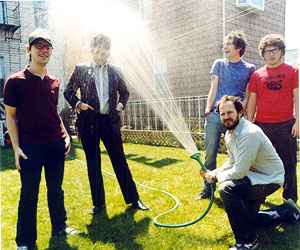
The chronology of my memory of the pivotal events (pertaining to New York City) surrounding the turn of the century consists of:
Late 1996: I move to NYC
Oct 1997: Jonthan Fire*Eater play Windows on the World
Also 1997: Let Them Eat Pussy, the debut album by Nashville Pussy, is released. Everybody in NYC wears cowboy hats until…
2000 YYYs’ self-titled
2000/2001: Flux Information Sciences’ Public/Private
9/11: 9/11
Jan 2002: my second band breaks up https://www.angelfire.com/myband/thecandydarlings/ (don’t click)
2003: Panthers play the opening of Marquee, with Paris Hilton attending (this may have happened in 2006, the earliest reference to Paris Hilton going to Marquee I can find. There are no hits for “marquee nyc panthers.”)
Also 2003: In March, the NYC smoking ban for bars goes into effect. In August, the NYC smoking ban in bars is suspended for the duration of the NYC blackout. On August 17th, the NYC smoking ban for bars resumes.
2004: TVOTR’s Staring At The Sun
2006: Cheeseburger’s Gang’s All Here
2007: Panthers’ The Trick
2008: American Music Club's "The Windows On The World"
The Rest of the Decade: I meet and fall in love with my wife. I form my third and fourth bands, Carlos D leaves Interpol
2010: Religious To Damn’s Glass Prayer
June 2011: Iceage play first NYC show.
2012: My fourth band releases our best album
March 2013: My fourth band breaks up (Jay Green’s post-Panthers band, Violent Bullshit, play our last show)
Some other stuff happened, but that’s the gist. If you want statistics, go be into sports. Because, aside from the wars, most of the stuff that others considered important wasn’t really on my radar. To my knowledge, I still haven’t heard more than five songs by The Killers, Kings of Leon, and My Chemical Romance combined. Didn’t and doesn’t seem too hot imo. I own Meet Me in the Bathroom but, like the song goes, I was there. True to this, I looked my name up in the index, read those pages, shut the book, and haven’t opened it since. I’m not inclined to love what doesn’t love me back. Anyway, I had my own interests. The fact that Panthers warrant two mentions—two and a half/three if we count Violent Bullshit—is what we’re doing here.
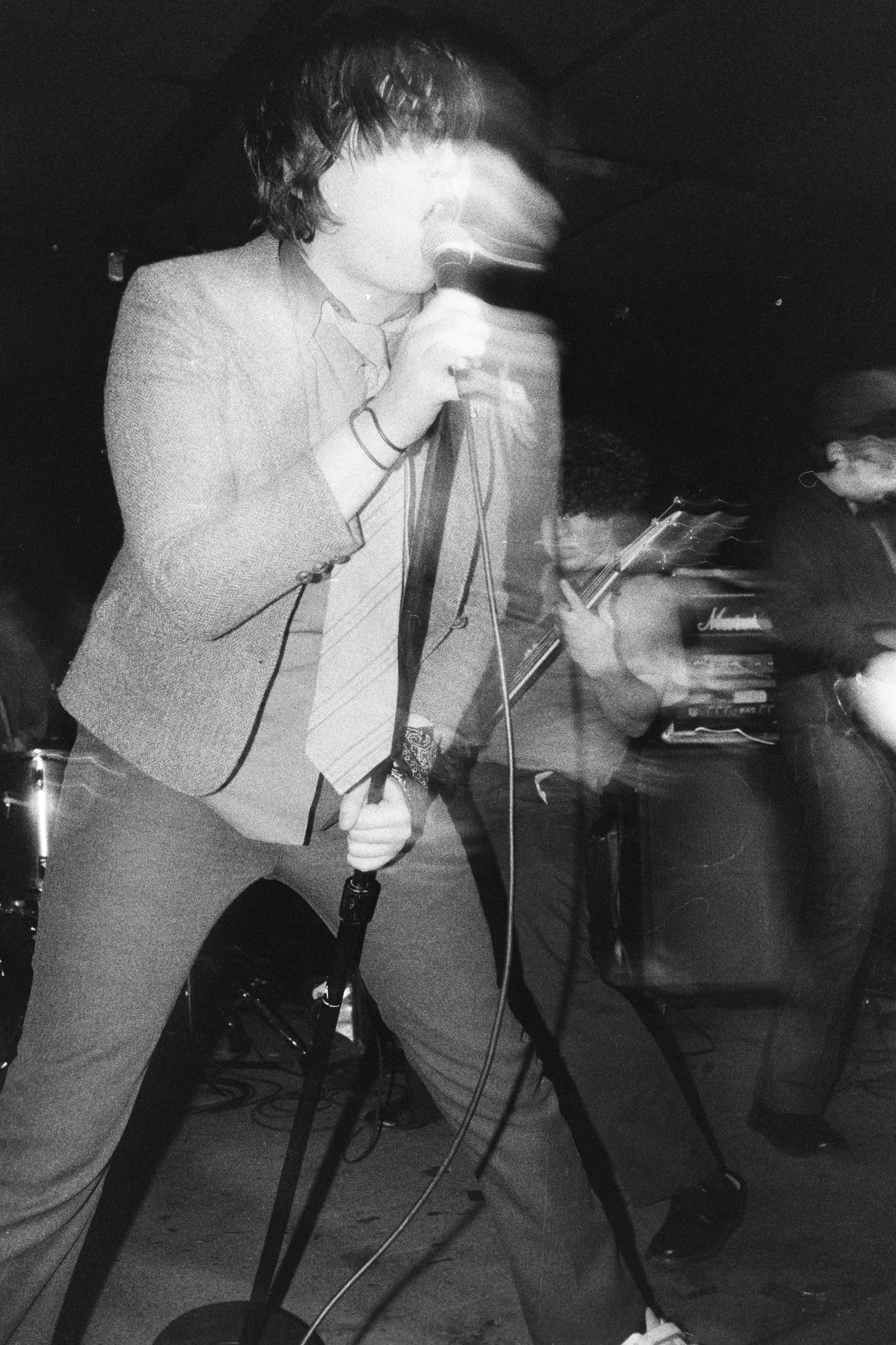
Though the indie sleaze revival is dependent on a purposely imprecise vibeology for whatever traction it has, certain traditional metrics are still applied. While Charlie xcx may have set the stage for the revival by performing a cover of “Sheena Is a Punk Rocker” for VICE advertisers in 2016, there’s a reason that all of her photo sessions in support of this year’s Brat conform to the couch-standing studied-debauchery standards of aughts-paparazzi “casual” shots rather than attempting to approximate the derangement of Karen O, the pigeon-toed stance of any Long Blondes, Kills, or Little Killers. Or, for that matter. the literal anything of a Beth Ditto or TV On The Radio. It’s the same reason why your average Shop Boyz or Post Malone will advocate for partying like a rock star but will keep the song’s guitar tone real Uncle Kracker. Rock and roll, as lifestyle, provides a nice bit of flair. But there’s no shortage of viable hobbies these days. And, even when the stakes range from low to non-existent, there are winners and losers.
“Never Be Alone,” a 2002 song by the UK proto-indie landfill band Simian, has nearly two million plays on Spotify. “We Are Your Friends,” the version of the song which was remixed by the French duo Justice in 2006 (and which is commonly regarded as a tentpole of the first wave of indie sleaze), has 76 million plays and a 2015 movie (starring Zac Efron and Emily Ratajkowski) named after it. Justice’s wikipedia page is divided into more eras than many century spanning empires.
Conversely, despite its drummer (James Ford) having produced brilliant albums by Klaxons, Chrome Hoof, Beth Gibbons, and Geese (and a ton of extremely successful stuff, that I’m sure is great, in between and after), Simian’s wikipedia page reads like an address book that was mistakenly left in the pocket of a pair of just-washed jeans.
“Goblin City,” the first song off of Panthers’ 2007 album, The Trick, has 14,000 plays on Spotify. The Holy Ghost remix has 143,563 plays. To mistake this coincidence as some sort of (adjusted for historical scale) metaphor, is to expose oneself as one of those types who bang on about the age-gap problematics of the Old Testament. Because, even at the height of the over/underground smooshication which the ‘90s began and the aughts perfected, there were still separate camps within the culture, each with subtly different aims (both stated and implied). If a band like Panthers—who jumped from Troubleman Unlimited to Dim Mak to VICE in the space of three years—appeared to want it both ways, it’s only because wanting everything and nothing is, ideologically speaking, a big tent.
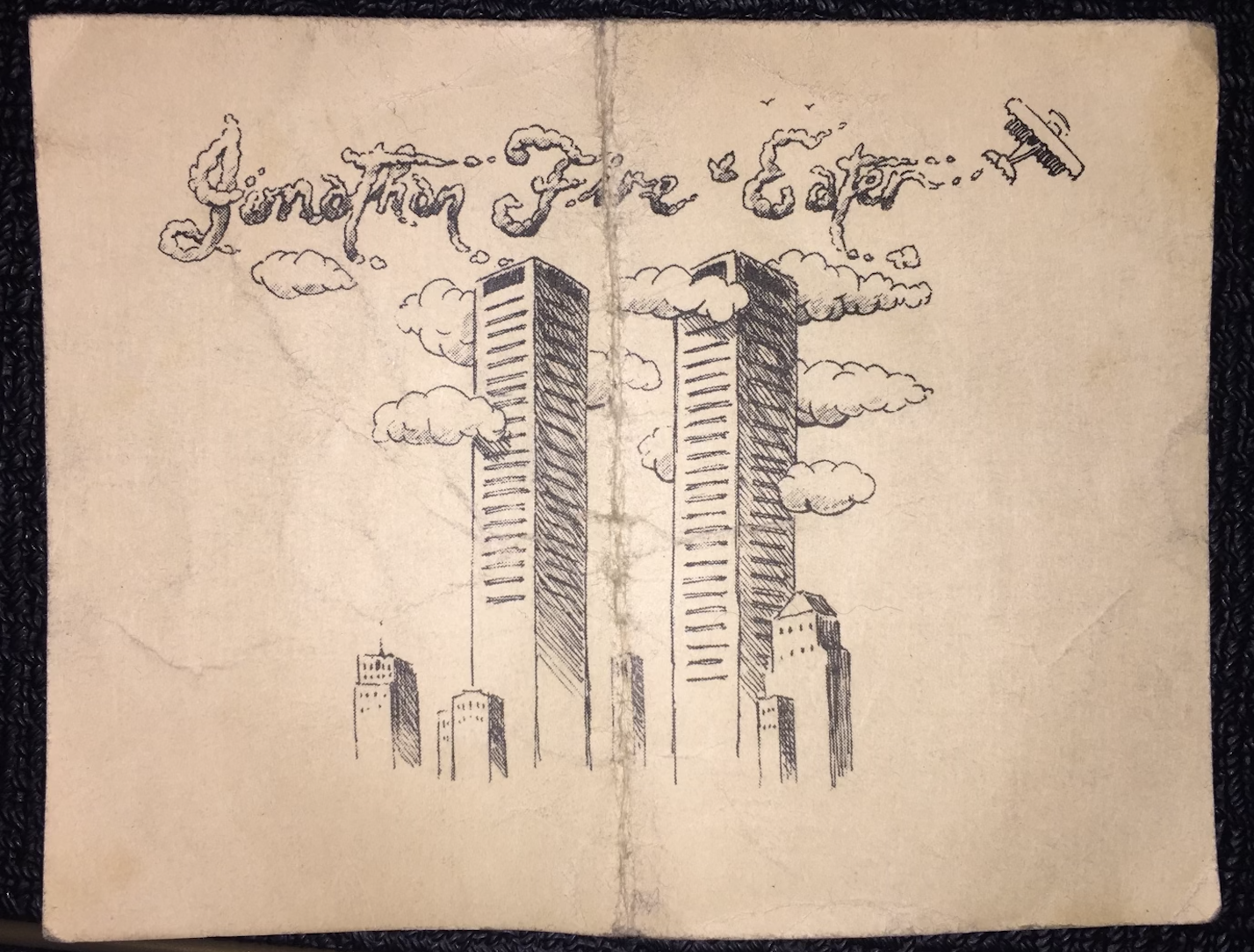
The Indie Sleaze revival, which most of us foolishly wrote off as non-blip that would disappear in a week, has proven (again via Charlie xcx) to have legs that go at least part of the way up. Of course, there are not enough saturated photos of dissolute publicists in headbands making out with the sentient dandruff brushed from a t-shirt of the bassist from The Cribs to convey the abject horniness of being young, coked up, and middle class in NYC during the years that portable phones made what was never forbidden (to those within that milieu) not just permissible but as easy as ordering a well vodka cranberry at a Dark Room happy hour or contracting HPV from a friend of a friend of Interpol. But the Indie Sleeze Revival being a bit of a lie about a lie has hurt it about as much as any of the other lies we all choose to swim in for fun and profit. Granting that, it’s still a fact that, of all the misplaced-nostalgia facsimiles, this revival is the most inane in recent memory. It’s akin to the Swing Revival of the ‘90s, if that third-wave-ska-concurrent hallucination had, as a stated goal, attempted to recreate the post-WW1 poetry scene. No matter the recombination of t-shirt and tie innovations Indie Sleaze may attempt, no innovator can be seen (via either Instagram or payola) into existence in the perceptual later which is now. Because nothing which exists on the same planet as smart phones can approximate the tedium of being alive in the before-times.
On the other hand: pobody’s nerfect.
After all, is it the revivalist’s fault that there is nothing on Instagram (or in Dime’s Square) that, for all the effort visabally expended, can carry the freight of history like a flier for Jonthan Fire*Eater having a record release at the Windows of The World? Or, for that matter, the undocumented oddity of Panthers playing Marquee in 2003, to an audience consisting of a (pre-porn, pre-Save The Children redemption arc) Paris Hilton—who exuded a disappointing normalcy years before the term, “Paris Syndrome,” even entered the vernacular—and a handful of post-hardcore cocaine junkies braving the rarified air above 14th Street for the first/last time? It’s not like Ultragrrrl posting clips of beheadings, as part of her brother’s zionist project, makes for ideal content in 2024. And anyway, what’s niche-gained herpes to a youth hooked on a more terminal viral-ity? What’s the profit margin on VICE cosplay without the (overt) racism? If the goal is just to appropriate the paygrade of an early-aughts VICE employee, subtracting Gavin and adding money, I guess the reenactment works to some/whatever degree. Maybe the not-quite-kids are onto something. Maybe boredom is a Tardis. It’s certainly roomy enough.
Anyway. Panthers were a swell band that not many people remember. Panthers (guitar: Justin Chearno, bass: Geoff Garlock, vocals: Jayson Green, drums: Jeff Salane, guitar: Kip Uhlhorn) were neither all about the end of the American Empire (as maybe their early, claimed, MC5 fetishism implied) nor terribly interested in appealing to fans of, say, Empire Of The Sun (whatever Shane Smith’s accountants may have hoped). Panthers were simultaneously the (International) Noise Conspiracy of the Americas (in how they too took the polemics of the Nation of Ulysses and applied a fuzzbox to them) and the antithesis of (International) Noise Conspiracy (in that Panthers didn’t fucking suck). Panthers were simultaneously as inherently divisive (P4K critics hated them, cool and talented people loved them) as they were unifiers (with straight-edgers and cocaine addicts coexisting amicably in an econoline for the duration of entire tours). In all this, Panthers were like The Dictators (a polemic party band, fronted by a natural comedian) while simultaneously being the Dictators’ antithesis (a band of transplants, with perfect politics that only scanned as bothersome within the context of having a lot of friends who’d, given the option, have voted for Mao), who admitted to hobbyism only when fate forced the point). Basically, the Stuyvesant-ical ideal of a perfect New York City Rock and Roll band. And not just because none of them were from here.
Where Panthers were from is complicated. Technically speaking, guitarist Kip Uhlhorn was from Tennessee, guitarist Justin Chearno was from Ohio, and singer Jayson Green, bassist Geoff Garlick, and drummer Jeff Salane all met in New England (with the former two being nice Connetticut youth crewers and Salane being originally from South Carolina). Which is all well and good until one concedes that America, as a geographic construct, has always worked better as an ideal than as an actual place. In this vein, the Eastern Seaboard of Rock Music has typically been laid out like this: Connecticut is in New York (or Long Island), Philadelphia is in Brooklyn, Western Massachusetts is an extension of Alston, Virginia is Washington D.C., Maryland is Washington D.C., Richmond is Washington D.C., everything South of Virginia is The South, unless is it’s North Carolina, Florida is Cuba (except for Against Me! and all the oogles), and New Jersey is either New York City or Washington D.C., depending on which side a band fought on in the Pussy Galore/Unrest Wars. As part of the accord which brought peace to the land after that conflict, Bad Brains is shared by D.C. and NYC equally.
This peculiar cartography had been good enough, well into the ‘90s. But by the turn of the new century, Washington D.C. had been steadily importing hardcore adjacent, somewhat modish, art-rockers up north for over a decade. These transplants, having given up on their first choice dreams of either dating or being Christina Billotte, brought with them a righteous austerity, half prep and half DIY-or-Die, combined with the certainty—that comes with having family in either/both diplomacy and/or the CIA—that hardcore came from within and punk was whatever they said it was. All of which, be they zipcode DMV-ers or just regular Americans who admired how the MacKayes wore their knit caps—made for a healthy enough scene of moth-dressed soul punks who were open to a post-hardcore which was informed by rawk. What was needed by this scene was a noisy rock music which was egalitarian in both philosophy and riff, but alienating enough to give that egalitarianism the appeal of a clique.
In the question of which came first: the blazer/hoodie combo, or the blazer/hoodie combo sound, there can be no definitive answer. What is definite is that, by the year 2000, there was a blazer/hoodie combo vacuum which needed filling.
This wasn’t necessarily a job for a D.C. band (bands from the capital had a tendency to either sign to the majors or go full garage rock as soon as they signed a Williamsburg lease). It was an assignment best suited to a band which was spiritually Dischord-ian, while still willing to give being New York scumbags a whirl. With Ted Leo’s Chisel having broken up, Girls Against Boys having gone briefly electronica, and Dead Meadow being on pot, it would fall to an alliance between Orchid (with Jayson Green tempering his emo caterwaul to a Picciotto-esque emo enunciating) and Pitchblende (with Justin Chearno compacting his math riffs down from pi to a reasonable long division) to bring all the pissy bravado and scene creaming intelligence that the dirty job required. It’s no coincidence that one of Panthers’ lead guitarist earliest recordings was Chearno being featured on “Yes She Is My Skinhead Girl,” the sole Unrest song to repeat the refrain of “yes, I want to fuck you all the time.” And it’s no small thing that a decade after Teen Beat’s flagship banded had thrown down the gauntlet to “Fuck Pussy Galore And All Their Friends,” a band of post-hardcore malcontents—made up of as many NYHC fans as it contained partisons for D.C.’s Revolution Summer—showed up and declared to the whole world a vigorous amalgamation of “We’ll see what we can do,” “after all, most of the bands around us kind of stink and we might just rule,” and “who’s holding?” slash “u up?”
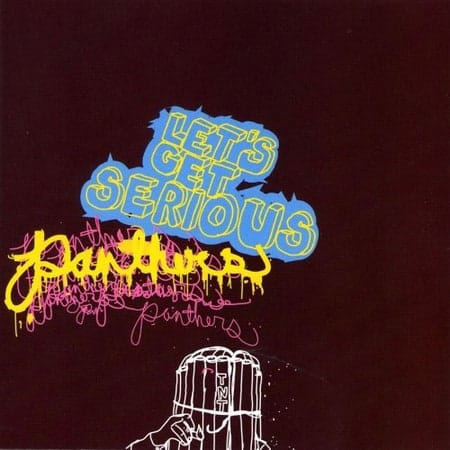
After performing the dues paying ritual of putting out an album (2002’s Are You Down??) on Troubleman Unlimited—the pre-Italians Do It Better avant punk label which avant punk bands signed to when they wanted to recreate a to-scale DIY version off the KLF setting a million pounds on fire—Panthers put an EP (2003’s Let’s Get Serious) out on Dim Mak, the label formed by Steve Aoki before he realized that the real money was in throwing cake at dumdums.
Both the LP and EP are sweet enough slabs of agit-punk—sloshing over with dueling guitars, crasher-soul rhythm, and hornily anti-misogynist swagger—with the latter being a marked improvement over the former and the blurry production on both (which makes even the most pointillist of guitar lines blurt) giving the songs an almost outsider garage rock feel. If either recording suffers, it’s for the same reason that a number of ‘90s garage punk albums blur together; MC5 white panther funk doesn’t lend itself to waves of distortion, no matter how inventively conveyed. If yr going to do that kind of boogie, all I want high in the mix is snare, kick, solos, and a charismatic weirdo yowling about how the only thing standing between the workers of the world and a epochal revolution of the human spirit is this goldarn bra strap. Which Jayson Green gamely supplied (albeit conveyed with the pained knowingness that comes with a deep understanding of the problematic nature inherent to the MC5’s relationship with toplessness). But, while conceding that the whole MC5 tag was due more to an ill-advised early bio than the band’s actual vision of how they’d sound) the singer, the snare, the kick drum, and Chearno and Uhlhorn’s guitar leads should be louder. (Weirdly/not weirdly the YouTube version of Let’s Get Serious sounds significantly fatter than the Spotify version, so take even this mild critique with a grain of salt.)
Not being immune to a bit of wishcasting, when I heard that one of the conditions for Panthers signing to VICE was that Gavin McInnes had to step away from the company, I chose to believe it. Years later, when I mentioned that belief to a friend who’d been a VICE higher-up around that time, he looked at me like it was dawning on him that, in a certain light, I was dumb as hell. “Do you think,” he asked (after expressing a great deal of fondness for both the band and Jay Green), “that a multi-million dollar media company got rid of their founder so they could sign… Panthers?” Sufficiently shamed for my momentary lapse into idealism, I asked Geoff Garlock about the rumor. After also taking a moment to enjoy my credulousness, he said that, in his memory, Green had expressed discomfort about Gavin’s involvement in VICE and Suroosh Alvi assured the band that, by the time Panthers released a record, it wouldn’t be an issue. The chronology is a bit fuzzy and, as with many NYC artists at the time, there was still a bit more overlap with VICE’s Dept of Ethnonationalism than anyone is entirely stoked about. But McInnes would indeed be uncoupled from VICE soon enough, leaving the Do’s and Don’ts not that funny and the media group itself 50% less ironically racist. That percentage being on par with most indie labels of the time, Panthers signed.
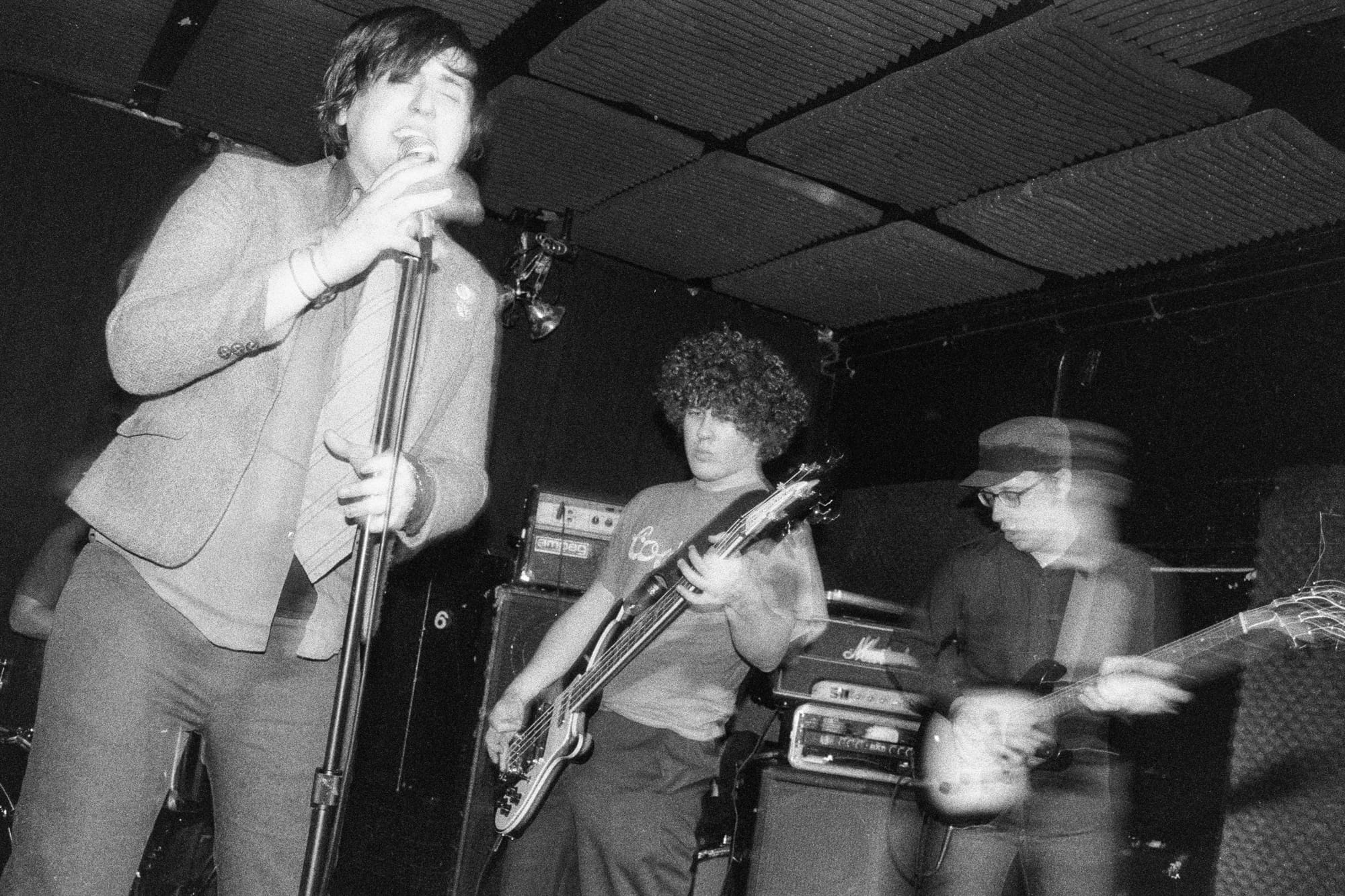
It’s with Things Are Strange (released by VICE/Atlantic in 2004) that Panthers truly get down with their own bad selves. As a number of their peers were going gaga over Black Sabbath, Panthers decided to indulge its individual members’ growing excitement about the twin-guitar acrobatics of Thin Lizzy and the prog grooviness of bands like Magma. As their peers in even the post-hardcore community were dumbing down and thickening their riffs to a caveman degree, Geoff Garlock was looking to the Swedish complicated-metal band Opeth for album recommendations (by his telling, in the same way he’d looked to Quicksand for advice when he was a teen). And just in time for the band to excise most of its MC5 influences (except for “Looking At You” obviously)—in favor of Amon Düül ll worship, Live at Pompeii/Nile Song expansiveness, and a near-motorik grind—our heroes got noted snare/kick/guitar-lead appreciator Alex Newport (Fudge Tunnel, Nailbomb) to produce.
Whether the band was always this good, or they were pushed to new heights by the on-album addition of the ludicrously gifted drummer Jerry Fuchs (playing second drums and percussion), or you can just finally hear everyone for the first time, is immaterial. Panthers finally sounded like Panthers. Well, Jay Green sounded like a happy/bothered middle ground between Renate Knaup’s voice on “Archangel Thunderbird” and the “just asking questions” uptick of Dan O’Mahoney. But he sounded real nice and, as not a lot of people were claiming that territory at the time (and wouldn’t until maybe Touché Amoré opened up a kiosk next to Spencer's Gifts), we’ll just say that he too sounded like Panthers. So too did his lyrics make a leap. Without abandoning his arch obsessions with either subverting hardcore lyrical tropes or “theory,” but perhaps grasping that sex-as-comodity critique had already been perfected on “Hey Big Spender,” Green leaned further into self-doubt, perversions of the heart, and a view of scene politics which verged on existential. So, on one windingly propulsive, skronkingly progged track after another (with names like “Theory Is Famous” and “Thanks For Simulacra”), Panthers Panthersed as Panthers-ly as any Panthers had ever Panthered, often at seven minutes a pop.
Which, turns out, wasn’t what the world particularly wanted. In 2004, while (as noted) stoner metal was in full flower of one its periodic revivals, and there were still a number of bands of a certain degree of no wave abrasiveness and/or knotty disposition which were thriving, the intelligentsia and audiences alike were entering the decade’s long slide into avant-AM preciousness, Canadian pomposity, and slicker (and ever slicker) new wave pastiche. With the rough edges of early electroclash sanded away into an inhalable power, the Indie Sleaze era which the current revival directly references was just beginning, with all the encroaching void that entails. Even with their lyrical concerns devoting an appropriate amount of attention to cherry popping and its discontents, an undancily peculiar band like Panthers—more interested in the Cultural Revolution’s Gang of Four than the band of the same name (or any of the New Rock Revolution’s facsimiles thereof)—wasn’t going to benefit from any hot fuss runoff. Or appeal to the new dance-punk kids who’d decided that what they really wanted all along was prettier, more accessible versions of the Strokes.
Pitchfork, in this distant past when the site operated as a gatekeeper of all things indie, gave Things Are Strange a 6.2. Which, while a marked improvement over the 0.7 review the site had awarded Are You Down?? (with that review written by a critic who, as if to add insult to career debilitating injury, would go on to give a Titus Andonicus double concept album Best New Music), didn’t give Panthers much leverage at their yearly VICE Media employee review. While VICE (and the band’s own merits) brought a certain amount of success/cache/acclaim, Panthers increasingly found themselves either alone in the bathroom or knocking on the door to a bathroom meeting which was increasingly overcrowded with square and bohunk interlopers like Kings of Leon (or, worse, bands who were Panthers’ friends).
“It's a wonder that we still try
Cause the format's not conducive for coherent lies.
Like getting jealous of successful friends
It's not beneficial for a satisfying end”
“Uncertainly, the sixth song on The Trick, begins with Justin Chearno’s guitar cresting into itself, collapsing backwards before each phrase gets a chance to break. Equally truncated are the phrases Chearno plays for the verse; they’re high squiggles in conversation with each other but with none of the speakers conceding the other’s point. To settle the matter, Jay Green brings back his Orchid-era scream, howling “We've been working / for uncertain wages / When we go out / we all get so wasted” like some perverse call for unity. That the chorus could double as a rejoinder to the chorus of “The Rat” (“When I used to go out, I would know everyone that I saw / Now I go out alone if I go out at all”), where the singer of the Walkmen acts like he’s too good to hang out, is maybe a coincidence. But also, that’s the difference between D.C. and NYC as well; our post-scene disenchanteds are less likely to pretend like they’re fancy.
The Trick, the band’s last, is where Panthers got it as right as they were ever going to get it. It’s where all their weird and unfashionable hobby horses came together, to make one of the finest and grooviest rock albums of the aughts
In 2007, Kip Ulhorn had departed to focus on Cloudland Canyon. Panthers’ Marquee audience was at least four subculture trends beyond Panthermania (with even Paris Hilton having gone electro-disco on the previous year’s “Stars Are Blind”). So Panthers found themselves in a bit of a cultural null-space. If the band had been outliers amongst the Interpols and YYYs, they fit in even less amongst the new ponderousness (exemplified by bands like the National and Arcade Fire) which had taken hold of independent guitar rock. Even Jayson Green’s niche (of being a singer who knew a bunch of words) had been overtaken by acts like the Decemberists, Vampire Weekend, and all the other hyper literate folksters who (in effect if not in intent) had returned propaganda and irony to their initial functions; making sly passivity in the service of landlords.
While the time in question has been determined (somewhat arbitrarily) as the official onset of first wave indie sleaze, indie rock had already—outside of VICE parties—partially checked out as being relevant to the party photographer scene, ceding that debauched ground to deejays, dayglo OMD cosplayers from Wesleyan, and all the new breed of art schoolers whose childhood immersion in pop and dance music allowed them to pull off slutty nihilism more convincingly than the true-self-denying record collectors who’d spent the early aughts attempting to square the circle of behaving like Patrick Batemen while Delta 5 played in the background.
Not to say that semi-popular indie guitar bands weren’t still doing copious amounts of cocaine or had stopped cheating on their partners. But they had stopped wearing so many stripes while doing so, and were learning to keep the expression of those proclivities behind closed hotel doors, joined only by their publicists, the publicist friends of their publicists, and the relevant music site publishers. As connected as Panthers were, the band members were ill equipped to gladhand a population who wanted a more facile electroclash or a UK press that had trained itself to worship—like cats chasing a laser—only the new. Even as old hands as critical whipping boys, the vans was still at a further disadvantage in the face of a full scale Revenge of the Nerds push by an American press who, after experiencing loneliness at one too many VICE parties, had decided that New York City was super gross (with some of the more stridently differently-hipstered critics entering Year One of a long-term revisionist history project which would eventually place responsibility for the Iraq War squarely at the feet of the Strokes).
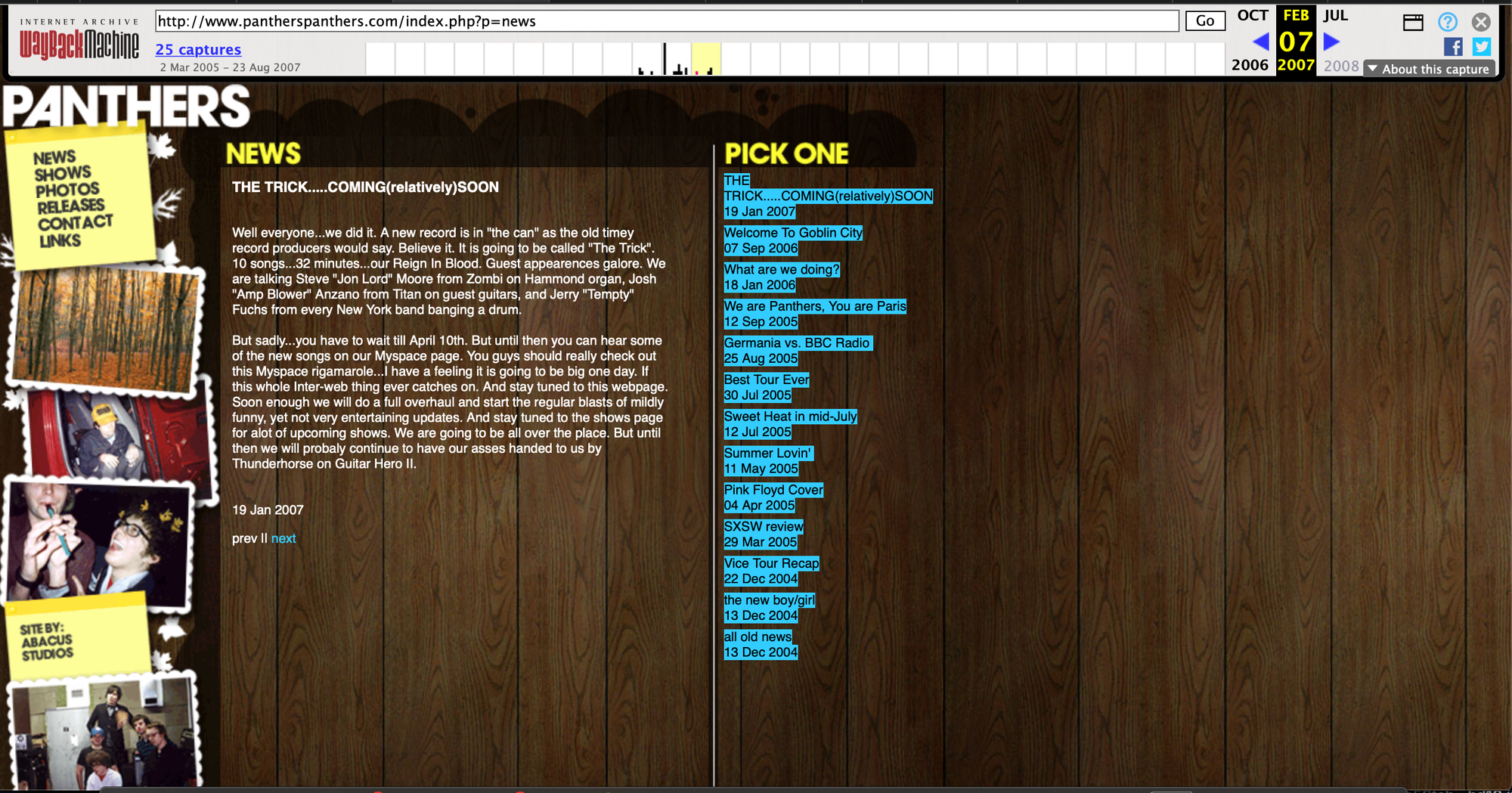
Concurrently-ish*, New York’s attempted heavy metal revival had begun in the Summer of 2005. It had peaked with the September release of Early Man’s “Death Is The Answer” single. It ended with the release of Early Man’s debut, Closing In, in the Fall of 2005. When a place can’t accept that it’s hardcore town, when it can’t accept that Prong and Anthrax are as good as it’s going to get, that place will periodically attempt to make Raging Slab happen, with recurring and predictable results. It’s called hubris.
In the face of all this, Panthers decided to go hard rock.
Rather, Panthers decide to go harder rock. As the city officially capitulated its rock crown to whatever city wanted it, Panthers—as if on counterintuitive cue—decided that the ‘70s Luciferian Friendship art metal of Things Are Strange wasn’t enough. So what if the scene had been a wash in their hometown and most of the stoner metal produced outside of NYC was absolute dreck? There were still newish left coast bands, like Seattle’s Big Business and Oakland’s High On Fire, who were putting their own spin on ‘70s heaviness and, in their fashion, thriving. So what if New York’s neo-hesher track record had been less than stellar? Panthers, as always, liked what they liked. These Josefus riffs weren’t going to rewrite themselves. So, with VICE rejecting a first version of the album, Panthers took it to eight track. They upped the clean riff antics of the previous album (while shaving three minutes off of everything), pushed Green’s vocals up in the mix, pushed the bass into the overdrive, and—conveyed by Green’s yowl at its most plaintive—decided to make an album of straight up anthems. Without taking away from Kip Ulhorn’s previously excellent contributions, the result was some of Panthers’ finest music: the most primitivist riffs Justin Chearno had ever played, a returning Jerry Fuchs on percussion, a noticeably streamlined psychedelic freak-out (buoyed by Zombi’s Steve Moore on a Hammond B-3), and—in a concession to Black Sabbath’s utility—Jeffrey Salane and Geoff Garlock running locked groove through a hundred variations of “Paranoid” (presumably just to maintain a healthy balance between going off the rails and the trains running on time).
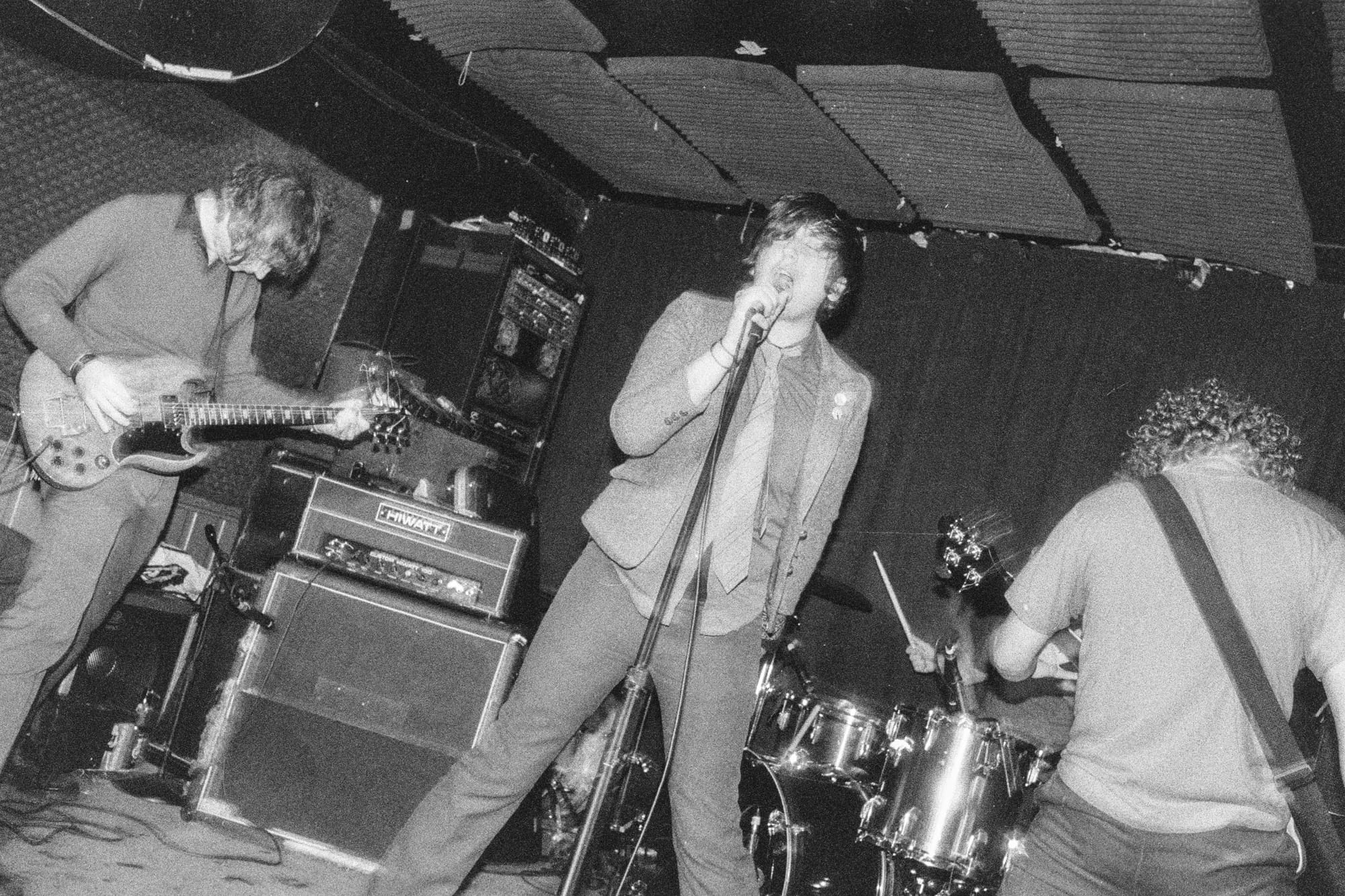
In a time when partying had become codified, heavy alt metal was supposed to be either silly or doooooooom, and self-loathing in three minute songs was supposed to only go deep enough to justify rampant toilet sex, Panthers decided to make a ten track song cycle of puritanical self-correction (applied to Death From Above 1979’s ur text), externalized struggle session, and of course the essential tedium/ennui that comes with having a relentlessly good time, with all sentiments (“the kids will have their say / I hate those kids anyway”) conveyed with an almost blissed out adherence to groovin’. In a paranoid hatred of “the kids” which was rivaled at the time by only Against Me! and the Blood Brothers, nearly every song on The Trick was about how emotionally, spiritually, and intellectually bankrupt everyone in and out of the band’s orbit was. And those were the people that Jay Green liked. So obviously he and the band decided to attack both the kids and the songs like the heaviest version of Canned Heat on the planet.
What kept all this scorn from being grating (in either the self righteous way of, say, End of a Year/Self Defense Family or, you know, hardcore lyrics in general) was how Green imbued each accusation with enough self-indictment that the listener knew that their being a phony wasn’t necessarily a dealbreaker, friendship-ly speaking. Plus, with the “c’mon c’mon” yowza-isms of previous albums sharpened, what cut through was an even more honest acknowledgement-of/invitation-to complicity. When Green sings “We’re not in this together,” he both means it and, if the listener agrees, also doesn’t.
And how could he not mean it? For “Hey Creep” to work as a simple finger-point at party photographers, divorced from any Quisling-ness on Green’s part, the singer of Panthers would have to explain why he was in a band that knew what a party photographer was in the first place. Maybe The Bronx knew who Bronques was, but do you think the dudes in Lungfish knew what “The Cobrasnake” was? Fuck no. So, we’re left with the chorus of “Listen to Me.” On that song, when Green sings, “I remember passion but it's out of fashion / all right / I'm tired of it too,” he’s conceding the point, but it’s feint. Green didn’t trust that earlier passion at the time, but he believes in it still.
Conceding that contradiction and/or reality, what had previously been sincerely despairing contempt posturing as posturing, was now preemptive hangover confessional. Thankfully, none of this was diaristic. Just like how the best realistic dialogue only feels realistic, without being as boring as actual conversation, Green said funny, depressive, and true (enough) things without forgetting that he was a lead singer with a job to do.
Plus: “I was obsessed with concupiscence / and now I'm just looking for a piece that's decent.” (Within the canon of indie sleaze, Panthers—to reference the aughts hardcore blog—were more than a witness.)
I won’t claim that The Trick is some sort of undiscovered masterpiece. I don’t even know if the men who made it even like it. In the face of what spurred my writing this long planned, long procrastinated essay, I didn’t ask. Fans of Panthers might be forgiven for preferring the early stuff: the stuff that came out when those fans were still in their early twenties and Jay Green’s lyrical disenchantment had the comfort of affectation. Or Panthers fans might prefer any of the commonly (albeit correctly) well regarded other works by members of the band**. There’s a lot in the Extended Panthers Cinematic Universe to admire, and no accounting for taste.
Still.. if I don’t consider The Trick to be a masterpiece, it’s because—not being gainfully employed by Jan Wenner—I don’t believe in hooey stuff like “masterpieces.” Neither did Panthers. Growing up in hardcore punk makes hardcore punk a punchline, but not necessarily a joke.
So, I may love Panthers, but you don’t have to love Panthers, or even like them. Instead of applying Mona Lisa metrics to an album that deserves more Louvre just for utilizing Deep Purple’s “Black Night” “na-na-na-na-na-na” guitar lick a full year before Pink (and seventeen years before Green Day), I’ll simply say that, besides their going real hard, The Trick (and Things Are Strange) make for something more interesting than just being important.
After all, as a riffy rock and roll band who played three-minute bangers for eight minutes (and favored prog and hip hop in their spare time), and as former hardcore kids who loved and loathed the scene which brought ‘em up (and did so with the ardor/disgust of lapsed Catholics), and as a band neither inclined to striving (nor inclined to kick success out of bed for eating crackers), it’s no wonder that Panthers are largely forgotten by both critical and popular consensus. Consensus, after all, is for idiots. Having—in their first jobs—individually innovated in the fields of “scramz,” D&D themed math-core, and proto-DFA krautrock, the Panthers collective approached their counterintuitive role (as denim mongering counterrevolutionaries firmly embedded within the DFA clique) with a nothing-to-prove which was potent enough to be self fulfilling. And they left nothing behind, except for a catalog (only partially available for purchase online) which started bracingly and got better and better, up to the point where the band got their own shit exactly right and promptly fell apart.
After the unjustly (if contextually predictable) muted response to The Trick, after a tour with High On Fire that’d be a harbinger of good things to come for a band on year 3 rather than year 7, and after a near-decade pleasing no one too exactly (least of all themselves), there was arguably no way to go but up. But experience had taught them to expect otherwise. So, having saved rock and roll as much as a genre that gets off on being the victim would allow, and down at that point to just Green and Garlock, Panthers called it a long, long day. (I’m going to safely assume that the euro-disco Ween-y songs that Spotify has the band supposedly releasing in 2010 is a different band. Again, I’m not asking.)
In a NYC music scene which would prove itself obsessed with both its own mythology and the myths of its forebears, Panthers’ ornery refusal/inability to ever reach godhead status/financial viability was to their credit at the time and, now, time has benefited them. Partially because of their being ignored and partially on merit, Panthers albums have the advantage of not being ossified by nostalgia, or even memory. They sounded out of place in 2002, 2003, 2004 and 2007 and, in 2024, they sound out of time within all the attempts at slathering recreation of those enervating and invigoratingly absurd years.
There’s next to nothing about Panthers online. As Green told me, they couldn’t get interviewed if they’d paid for it. So, in their context (or absence thereof), The Trick and/or Things Are Strange (all the Panthers albums, really) are not to be “appreciated” so much as felt out. Outside the cannon, you can listen to the music as if your opinions were your own. You can approach the albums in the same way you’d approach a painting you found on the sidewalk. It’s art, baby. It’s free and so are you.
In fact—with literally no one currently combining post-hardcore and classicist riffing in a remotely unembarrassing fashion, with the bands that even might consider that path being firmly in the thrall of shoegaze and Oasis-lite muttering, and with every one of the Panthers’ mid-aughts cultural/lyrical worries being an evergreen concern—the band sounds brand new. Ripe for discovery. Maybe when The Dare’s monetized devotion to LCD SoundSystem runs low on gas and the dude is forced to mine DFA’s apocrypha, Panthers might get their turn at getting cast in amber. But, for now, their music still breathes.
Hell, with no chance of ever reuniting (true even before Justin Chearno died), there’s no way of blowing it. As I write this, in this new and terrible context of Chearno’s intransigence on the possibility made irrevocable, I’d give just about anything to watch them try.
Thanks for reading.
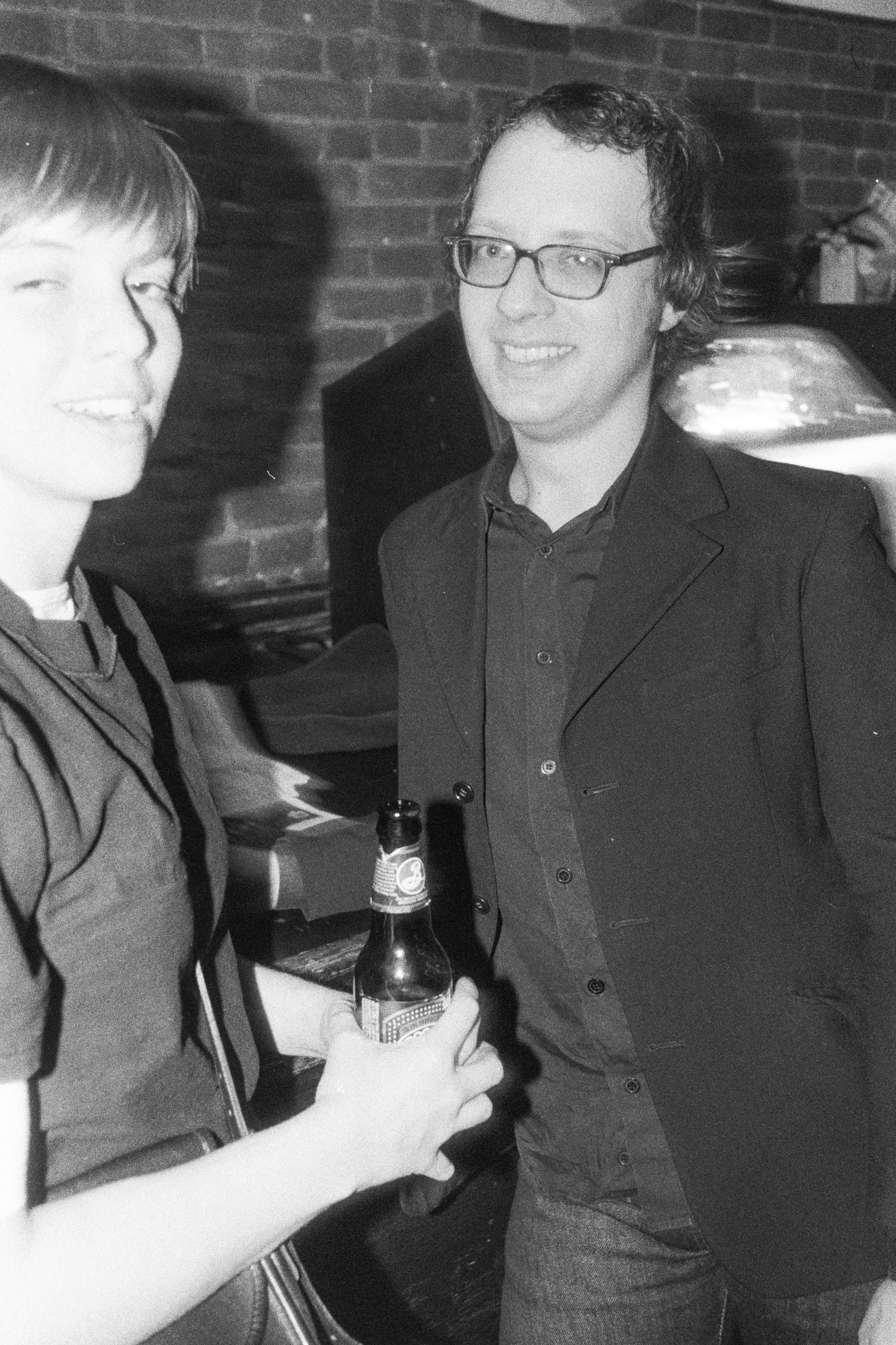
*Major Caveat: It’s important to note that, by 2005-7, the scattershot diffusion of taste we all muck through today was already in full 1,000,000 flower bloom. So, when discussing context, I’m obviously omitting a million acts/scenes which might, to a reasonable observer, undercut any exceptionalism on Panthers’ part. You’ll just have to trust me when I say that bands like, say, Low or Modern Life Is War might as well have been another dimension for the purposes of this discussion. That doesn’t mean they are not relevant. Only that, in the same way that Meet Me In The Bathroom engaged in Oneida denialism and how during the supposed wholesale counterculture revolution of the ‘60s there were still plenty of young people keeping it high and tight and voting for Nixon, any discussion of culture that isn’t a million pages long must pick one true story out of a hundred, even as ninety-nine of those truths may directly contradict the one you’re focussing on.
**Orchid deserves all the credit they get (and probably a bit more than that), and are entirely innocent in regards to any of the iffy bands who cite them as influences. The reunion has been, by all accounts, a dream success, and is ongoing. All it’s going to take is one prominent Tik Tokker to reach the end of the shoegaze, discover Cloudland Canyon and that band will get their deserved due as well. In the meantime, The Red Scare are having their bonkers discography reissued by Solid Brass. Chearno’s work with Turing Machine has never once fallen out of favor with anyone with an ounce of taste and, I imagine, the Pitchblende reappraisal is being fast tracked (as, regardless the reason, it should be). Violent Bullshit never, as the kids say, missed even once. Same can be said for the member’s current music. Garlock’s work within the mediums of both film soundtrack and youth crew is delightful and his late 2010s project, Low Estate (with members of Sannhet and Made Out of Babies) was great, and not just because they asked me to do an Andrew Eldritch/M Gira pastiche vocal on one track. And, of course, Jayson Green and The Jerk is now on DFA and, as is his way, he’s making music specifically for me (and the 1,000-1,700 other Kid Creole fans on the planet), but hopefully for you as well. (Salane doesn’t appear to be making music, but he’s doing cool shit regardless and looks good, so fuck it; buy a book.)
Again, thanks for reading. Please share and subscribe. Please subscribe to CREEM. Please check out my recent CREEM review of the new Nick Cave album. Please buy and support music made by myself and Zohra. Panthers albums are pretty much only available on Apple (hence all the admittedly not progressive Spotify links), but do yourself a favor and buy what you can find. And oh hey, Ghost now has a tipping option!